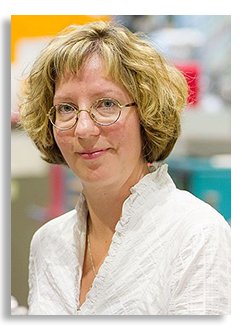
Abstract
Thin film solar cells, the most promising and cost-efficient PV technology, is based on compound semiconductors with a high absorption coefficient for sun light, such as Cu(In,Ga)Se2, organic metal halide perovskites or kesterites (Cu2ZnSn(S,Se)4). Solar cells based on the first two materials show very high power conversion efficiencies but contain very scarce elements (such as In) or very toxic elements (such as Pb), which would be problematic for their large-scale use. Kesterite-based thin film solar cells are considered as the only critical raw material free PV technology, but their efficiency is comparably lower. Finding alternative semiconductor materials with suitable properties (such as ternary nitrides) remains a task of utmost importance for the widespread use of renewable energies.
To understand the origin of the PV performance and stability it is essential to first understand the crystal structure and structural disorder (static and dynamic) in the absorber material. Kesterites as well the ternary nitride ZnGeN2 contain electronic similar elements which have a very similar atomic scattering factor. We make use of their different neutron scattering lengths enabling us to distinguish these elements in the crystal structure analysis by neutron powder diffraction. The organic portion in hybrid halide perovskites makes neutrons particularly useful in such investigations given their sensitivity to hydrogen and ability to distinguish clearly between carbon and nitrogen.
In the talk I will present our comprehensive investigation of structural disorder in kesterites and kesterite-related chalcogenides, halide perovskites and ternary nitrides, as well as discuss the correlation of this disorder with the optoelectronic properties of the absorber material and the consequences it may have on the solar cell performance.
Click here to see all available video seminars.
Click here to go to the SPREE HOMEPAGE.
Brief Bio
Prof Susan Schorr is the head of Department Structure and Dynamics of Energy Materials at Helmholtz-Zentrum Berlin für Materialien und Energie (HZB). She studied crystallography at the Humboldt Universität Berlin. After her PhD in Physics at the Hahn-Meitner-Institute Berlin and the Technical University Berlin she did a postdoc at HMI and the Los Alamos National Laboratory in US. Then she moved to the University Leipzig to do her habilitation and became a frequent user of neutron scattering facilities in Germany, Switzerland, Great Britain and France. Susan turned back to HMI (now HZB) to became a group leader in the Institute of Technology in the Solar Energy Division of HZB, continuing her research on materials for solar energy conversion suing neutron scattering methods.
In 2008 she was appointed professor at the Freie Universität Berlin where she taught crystallography, X-ray diffraction as well as neutron scattering. In 2013 it became a joint appointment between the Freie Universität Berlin and the HZB. Thereby she got the chance to build up a new department at HZB, which is now the department structure and dynamics of energy materials. Besides the research program her department is responsible for the user service on several neutron diffractometers (the fine resolution neutron diffractometer E9 and the Laue neutron diffractometer FALCON) as well as at experimental stations at HZB’s synchrotron source BESSY II. Thus she is very familiar with three perspectives of neutron research: as a user of neutron instrumentation, as a developer of neutron scattering methods and instrumentation as well as in the responsibility of providing user service on neutron diffraction instruments.
